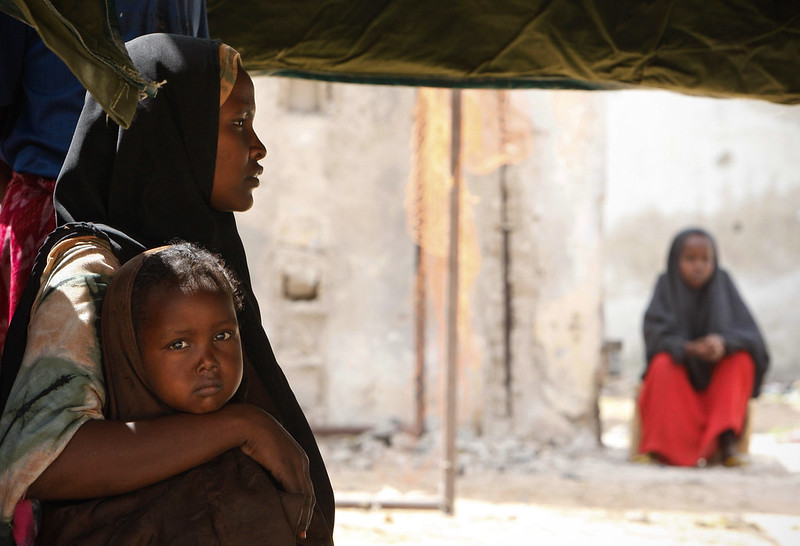5 Ways COVID-19 is Disproportionately Impacting Women Worldwide
 The COVID-19 pandemic has socially, mentally and economically impacted billions of people across the world. However, COVID-19 is disproportionately impacting women worldwide, including factors such as mental health, income loss and inadequate food provisions. As the pandemic continues to affect populations, it is becoming more apparent that women are facing greater hardships and systemic inequalities. This article discusses how COVID-19 is disproportionately impacting women across the globe, and how governments can go about fixing these inequalities. Although women have persevered and have adapted in inspiring ways, this pandemic has exposed structural gender inequalities in health, economics, security and social protection.
The COVID-19 pandemic has socially, mentally and economically impacted billions of people across the world. However, COVID-19 is disproportionately impacting women worldwide, including factors such as mental health, income loss and inadequate food provisions. As the pandemic continues to affect populations, it is becoming more apparent that women are facing greater hardships and systemic inequalities. This article discusses how COVID-19 is disproportionately impacting women across the globe, and how governments can go about fixing these inequalities. Although women have persevered and have adapted in inspiring ways, this pandemic has exposed structural gender inequalities in health, economics, security and social protection.
5 Ways COVID-19 is Disproportionately Affecting Women
-
According to a survey by the non-profit CARE, 55% of women reported that they lost their jobs and/or their primary source of income due to the COVID-19 pandemic. Additionally, women are more likely to be employed in service and informal sectors, such as vendors and traders, that COVID-19 is hitting the hardest. Even within the formal sectors of employment, women are facing the impact of unemployment at greater rates than men. For example, in Bangladesh, women are six times more likely to lose paid working hours than men. Women also have fewer unemployment benefits. In Zimbabwe and Cameroon, women make up 65% of the informal workforce—a workforce not entitled to unemployment benefits.
-
A lack of access to online education is significantly affecting Indigenous, refugee and low-income household communities and greatly adding to education inequalities. Young women and girls are greatly impacted by gender-based violence due to movement restrictions, especially without access to schools and public services. This gender-based disparity is largely due to boys being prioritized in many poverty-stricken countries. Because of this, girls are likely to be pulled out of school before boys in order to compensate for increased domestic work and care and to alleviate the economic burden of schooling.
-
Women are nearly three times more likely to report mental health impacts from COVID-19. This statistic is backed by multiple reasons, including how women are facing the burden of unpaid care work, increasing mobility restrictions and increased threats of violence. In fact, the CARE survey showed that 27% of women are experiencing an increase in mental health issues, anxiety and stress due to COVID-19, compared to 10% of men. In Lebanon, 14% of men spend their time on housework and care, as opposed to 83% of women. Gender roles and expectations of women have increased during this pandemic, thus causing a greater gap in mental health issues between men and women.
-
Female refugees are at greater risk of violence, income loss and mental health impacts. Refugees are already living in precarious situations with a lack of food, income, health security and home safety. When considering various countries, especially those with a large migrant population, it is clear that vulnerable populations are disproportionately impacted by the COVID-19 pandemic. For example, in Afghanistan, 300,000 refugees have returned because they have lost their jobs and income. In Thailand, migrants report losing 50% of their income. Both of these statistics also offer an idea of why mental health issues have increased during this pandemic. COVID-19 has led to a loss of income and jobs for the 8.5 million domestic migrant workers, as well as the dismissal of their health and safety.
-
As compared to 30% of men, 41% of women reported having an inadequate supply of food as a result of COVID-19. This difference reflects the gender inequalities in local and global food systems, as well as the expectation of women to buy and prepare the food for their families. Additionally, this pandemic is causing many disadvantaged households to make less nutritious food choices. In Venezuela, 61% of people have access to protein-filled foods and vegetables, while 74% only have access to cereal.
Although it is clear that women and girls typically endure a greater burden from the socio-economic impacts of COVID-19, there are ways governments and individuals can help alleviate COVID-19’s disproportionate impact on women. These include investing in women leaders, funding non-profit organizations that work to promote women’s rights and committing to organizations that work to close the gender gap.
– Naomi Schmeck
Photo: Flickr
